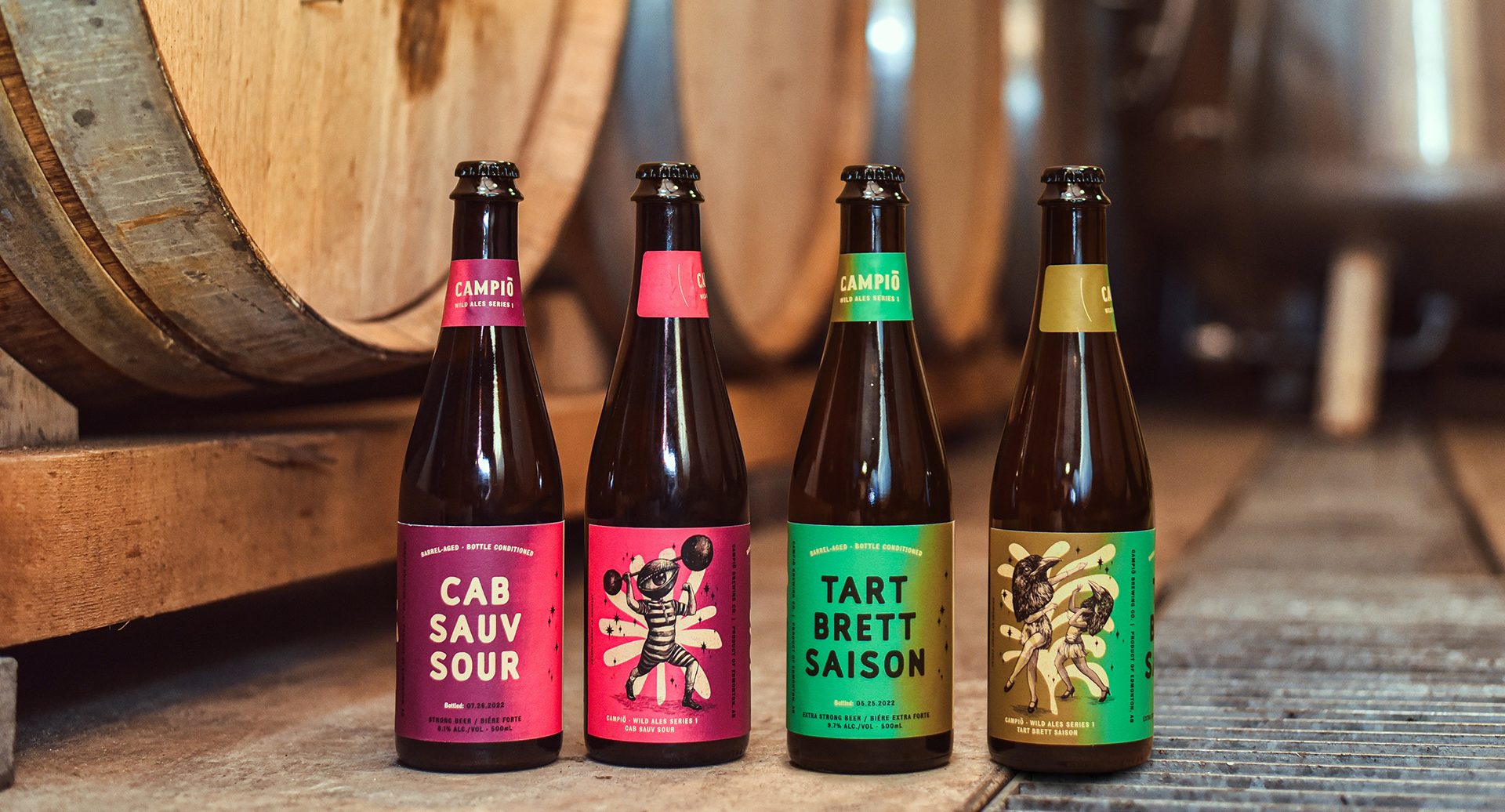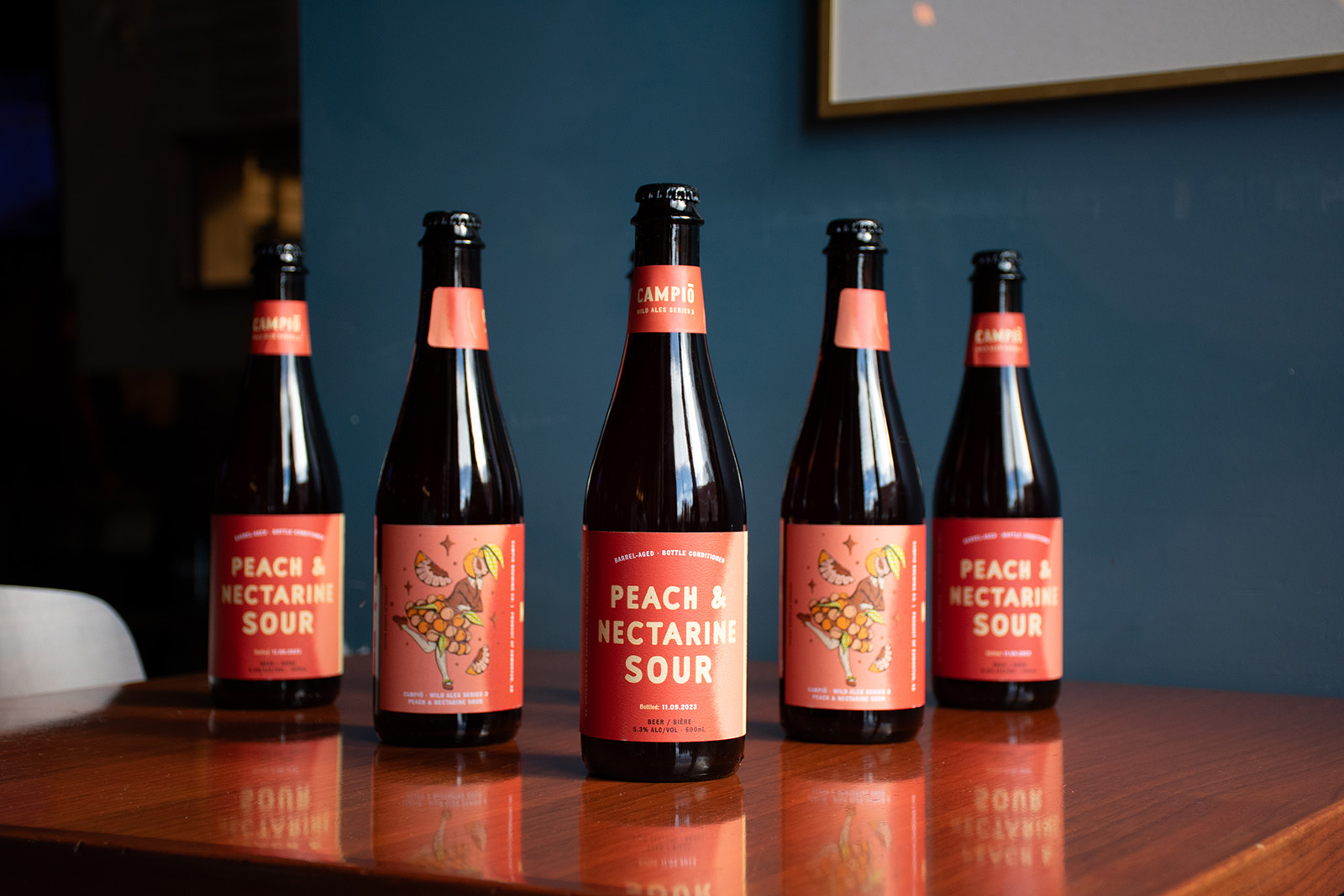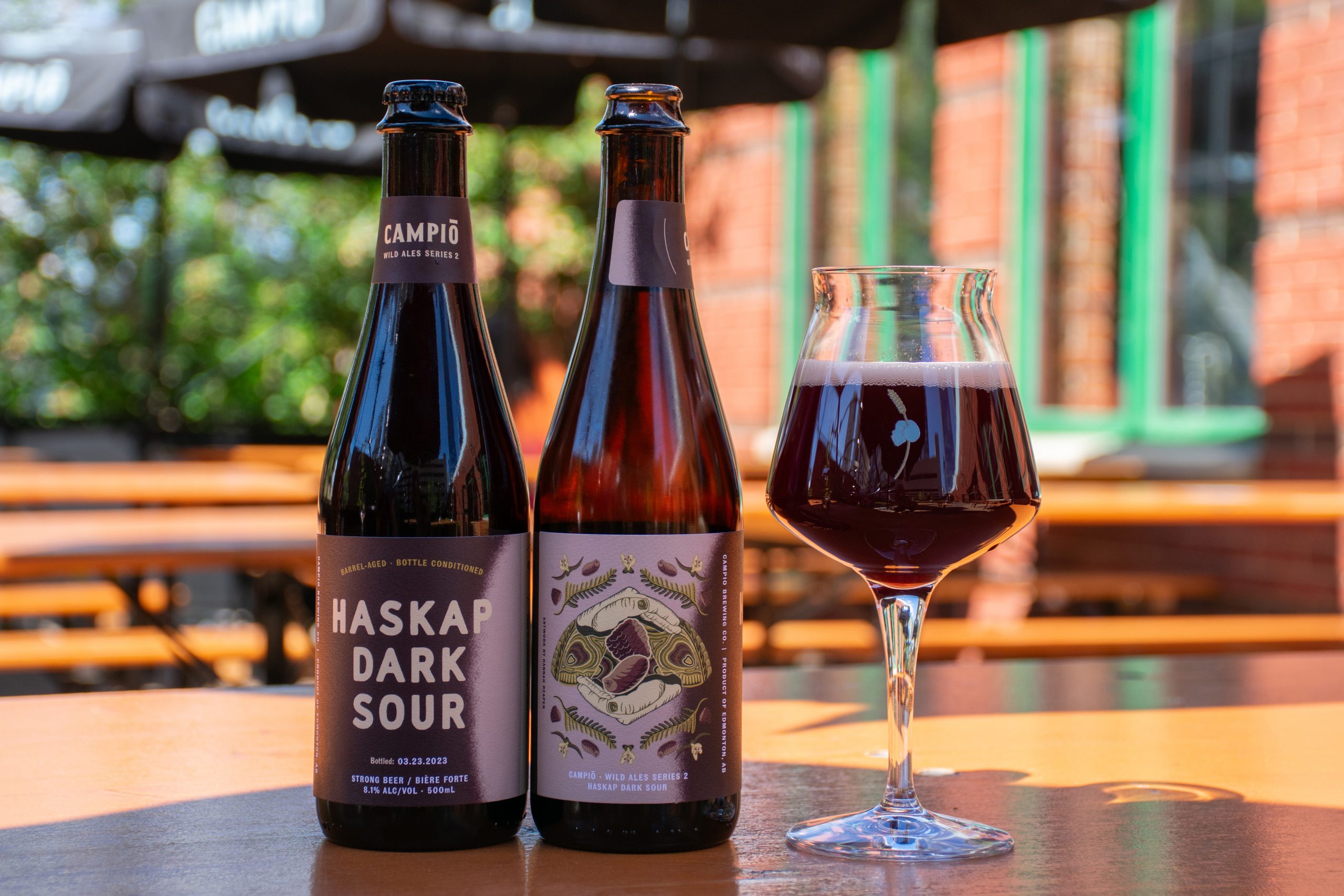
Wild Ales Series
From the small batch brewing process, to handling and caring for the barrels, to sourcing the fruit from local farmers (some of it literally by hand), to each hand-labelled bottle; this is really a labour of love and the team at Campio is very proud of this project. It showcases what we do best and what we love about this craft.
Our wild cellar includes four 2000 litre barrels - which serve as our main blending stock – as well as twelve 500 litre barrels, all filled with a diverse array of fermentations to add acidity, depth, and complexity to our blends.
We aim to use as many local ingredients as possible, including microbes produced in Canada, grain and malt from Alberta, local hops, and fruit! This gives our wild ales a particular local flair - a terroir even! – that makes them truly unique. Stop by Campio or grab a bottle at your local liquor store and take a walk on the wild side!

peach & nectarine sour
This full bodied, distinctively sour and funky beer with stone fruit sweetness will have you thinking you're drinking a bottle of funky fuzzy peaches. We started with a 50/50 blend of two Foeders from the barrels in the Campio Cellar, half Sour Red Ale and half Brettanomyces Blonde. These were then pushed into fruiting tanks on top of a huge pile of peaches and nectarines from our friends at Steve and Dan’s Fresh B.C. Fruit until the Wild Ales magic was complete.
5.3% ABV
With artwork from local Edmonton artist Hannah Reaper.

Haskap dark sour
Our Haskap Dark Sour Wild Ales we're brewed with 80kg of hand-harvested Haskap berries from local producer Rosy Farms. A jammy and funk-forward treat starring Haskap berries and notes of black raspberry.
8.1% ABV
With artwork from local Edmonton artist Hannah Reaper.
Grain: Superior Pale, Superior Pilsen, Flaked Wheat, Wheat Malt, Midnight Wheat, Red Shed Chocolate Malt, Munich Malt
Hops: Magnum
Yeast: Brettanomyces C, Sacch Trois, Fruit Bomb Saison
Other: Black Raspberries Puree, Whole Haskap Berries
The Process
You may be asking what is a “wild ale” and how is it different from your standard beer? We talked to our Brewery Operations Manager, Teaghan Mayers, and our Head Brewer, Brett Geislinger to break it down for you. The key ingredients you’ll find in every beer are water, malt, hops, and yeast – but it’s the yeast component that make wild ales so unique. “Brewers typically work with pure cultures of a single type of yeast that has been selectively bred to ferment beer with predictable flavour profiles known as brewer's yeast.” explains Teaghan. “Wild ales, on the other hand, are fermented by many different species of yeast, most of which live in the wood of the barrel where they are aged – ‘wild’ (or natural) yeasts. The final flavour will depend on the types of ‘wild’ microbes in the barrels, how many are present and how they interact with each other over the time that the beer spends ageing in the wood. The result is often unpredictable and occasionally magical! These wild ales often take several years to make from start to finish!”
Wild ales are known for complex and unique flavour profiles with descriptors like funky, barnyard, hay and earthy. And, in many cases, fruit is added to the brew to add further character and dimension. While these may sound unusual, trust us, they’re delicious. “The barrels used in the brewing process also contribute pleasant wood and oak notes to the beer,” says Brett. “All of the barrels we use at Campio are ex-Chianti wine barrels. The previous wine content adds a certain tannic depth and a touch of red fruit character to each beer.”
location:
10257 105 St NW Edmonton, AB T5J 1E3
587 635 1952
hours:
Monday to Thursday | 11:30am to 12am
Friday | 11:30am to 1am
Saturday | 11am to 1am
Sunday | 11am to 11pm



